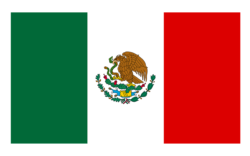Who Created The Flag Of Mexico
Have you ever wondered about the origins of the iconic flag of Mexico? In this article, we will explore the fascinating history behind the creation of this national symbol. Delving into the rich culture of Mexico, we will uncover the story behind the flag’s design and the individual responsible for its creation. Get ready to discover the intriguing origins of the flag of Mexico and gain a deeper appreciation for its significance in Mexican culture.
The History of the Mexican Flag
Origins of the Mexican Flag
The Mexican flag has a rich history that dates back to the early years of Mexico’s struggle for independence from Spain. The flag’s design was influenced by various indigenous cultures and symbols that represented the strength and unity of the Mexican people. It originated during the Mexican War of Independence in the early 19th century when different revolutionary factions sought to establish a distinct national identity.
The First National Flag
The first national flag of Mexico, also known as the “Flag of Our Lady of Guadalupe,” was adopted on September 16, 1821, just days after Mexico gained independence from Spain. This flag featured the image of Our Lady of Guadalupe, a revered symbol of Mexican national identity, in the center, surrounded by a green and white background. This flag marked the beginning of Mexico’s independence and served as a unifying symbol for the newly formed nation.
The Second National Flag
In 1823, a new design for the Mexican flag was introduced. This flag, known as the “Republican Flag,” featured three vertical stripes of equal width: green, white, and red. These colors were said to represent the ideals of independence (green), purity (white), and religion (red). This second national flag reflected the emerging republican values of Mexico and was used until 1864.
The Third National Flag
The third national flag of Mexico was adopted in 1864 during the French Intervention. It featured the same colors as the previous flag but with a different arrangement. This flag was known as the “Maximilian Flag,” named after Emperor Maximilian I, who was installed as ruler of Mexico by the French. The flag was widely rejected by Mexicans as a symbol of foreign occupation and was ultimately replaced after the downfall of the French-backed empire.
The Fourth National Flag
After the fall of the Maximilian regime, the fourth national flag of Mexico was introduced in 1867. This flag, often referred to as the “Restored Republic Flag,” reintroduced the design of the second national flag with the three vertical stripes of green, white, and red. This flag symbolized a return to Mexico’s republican values and the restoration of its independence.
The Fifth National Flag
The current national flag of Mexico, also known as the “Mexican Tricolor,” was adopted in 1968. It is an evolution of the second and fourth national flags, containing the same colors and arrangement of three vertical stripes. However, the current flag includes the country’s coat of arms, depicting an eagle perched on a cactus with a snake in its beak. The addition of the coat of arms highlights the historical and cultural significance of this emblematic symbol.

The Symbolism of the Mexican Flag
The Mexican flag is filled with symbolism that represents the history, culture, and aspirations of the Mexican people. Each element of the flag holds a specific meaning that resonates with the nation’s identity.
The Meaning of the Colors
The colors of the Mexican flag hold deep symbolism. Green represents hope, independence, and the lushness of Mexico’s landscapes. White symbolizes purity and unity, representing the Mexican people’s desire for harmony and peace. Red represents the blood of the national heroes who fought for Mexico’s independence and serves as a reminder of the sacrifices made for freedom.
The Eagle and the Snake
The centerpiece of the Mexican flag is the national emblem depicting an eagle perched on a cactus with a snake in its beak. This emblem is based on the ancient Aztec legend of the foundation of Tenochtitlan, the capital of the Aztec Empire, which now corresponds to modern-day Mexico City. According to the legend, the Aztec god Huitzilopochtli instructed the Aztecs to establish their capital where they found an eagle perched on a cactus devouring a snake. The eagle on the Mexican flag symbolizes power, courage, and victory, while the snake represents the struggle against evil and disruption.
The Cactus
The cactus depicted in the Mexican flag is a symbol of the Mexican people’s resilience, strength, and adaptability. Cacti are known for their ability to survive in harsh and arid environments, reflecting the Mexican spirit of perseverance even in the face of adversity.
Who Created the Mexican Flag?
The creation of the Mexican flag remains a topic of historical debate and controversy. While it is widely accepted that the flag design emerged during Mexico’s struggle for independence, the exact authorship of the flag’s design is still a subject of speculation. Several individuals have been attributed to the creation of the Mexican flag, each with their own contributions to its development.
Francisco Eppens Helguera
Francisco Eppens Helguera was a renowned Mexican artist and sculptor. He is often credited with designing the Mexican flag as it exists today, with the addition of the national coat of arms. Eppens Helguera’s artistic skills and deep understanding of Mexican history and culture played a significant role in shaping the modern interpretation of the flag.
Antonio Gómez
Antonio Gómez was a soldier and diplomat during Mexico’s struggle for independence. He is believed to have contributed to the design of the Mexican flag, particularly the layout of the three vertical stripes. Gómez’s knowledge of military symbolism and his commitment to the ideals of the independence movement influenced the flag’s final form.
Miguel Barragán
Miguel Barragán, a lawyer and politician, is considered one of the key figures in the adoption of the modern Mexican flag. His efforts to establish a national identity through the flag and his influence in the political sphere helped solidify the flag’s importance in Mexican society.
José María Magaña
José María Magaña, a Mexican lawyer and politician, is also attributed to the creation of the Mexican flag. Magaña’s legal expertise and passion for Mexican independence were instrumental in the development of the flag’s design and symbolism.
Controversies Surrounding the Creation
The creation of the Mexican flag has been a topic of controversy and dispute throughout history. Multiple individuals have claimed authorship, leading to debates and alternative theories about its origins.
The Disputed Authorship
One of the main controversies surrounding the creation of the Mexican flag is the dispute over its authorship. While Francisco Eppens Helguera is widely credited with designing the flag as it exists today, the contributions of Antonio Gómez, Miguel Barragán, and José María Magaña cannot be disregarded. The exact role and level of involvement of each individual in the flag’s creation continue to be subjects of debate among historians and scholars.
Alternative Theories
Aside from the disputed authorship, alternative theories regarding the Mexican flag’s origins have emerged over the years. Some theories suggest that the flag may have been influenced by indigenous symbols and designs, while others propose that it was inspired by European flags. These alternative theories further add to the intrigue surrounding the creation of the Mexican flag and continue to fuel discussions and research on its origins.
Historical Context
To understand the significance of the Mexican flag, it is essential to examine the historical context in which it was created.
Independence from Spain
Mexico’s struggle for independence from Spain, which began in 1810, played a crucial role in the development of the Mexican flag. The flag emerged as a symbol of unity and resistance against Spanish colonial rule. It represented the aspirations of the Mexican people for freedom, independence, and the establishment of a national identity distinct from Spanish dominance.
The Search for Identity
Following Mexico’s independence, the country faced the challenge of defining its national identity. The Mexican flag became a powerful tool in this quest, as it provided a visual representation of the nation’s values, history, and aspirations. The flag’s symbolism served to unite a diverse population and foster a sense of pride and belonging.
National Symbols
The creation of the Mexican flag was part of a broader movement to establish national symbols that represented Mexico’s cultural heritage and distinct identity. These symbols, including the national anthem and coat of arms, were crafted to instill a sense of national pride and unity among the Mexican people. The Mexican flag, with its vibrant colors and rich symbolism, became a powerful national symbol that continues to resonate with Mexicans to this day.
Influence on Mexican Culture
The Mexican flag’s significance extends beyond its historical and political aspects; it has become deeply ingrained in Mexican culture and daily life.
Proud National Symbol
The Mexican flag is widely recognized as a proud symbol of Mexican identity and cultural heritage. It is displayed in various public and private spaces, including schools, government buildings, and homes, as a tangible expression of patriotism and pride in being Mexican. Mexicans often wear clothing adorned with the flag’s colors during national holidays and sporting events to show their support and love for their country.
Use in Festivities
The Mexican flag plays a central role in many festivities and celebrations throughout the year. During Independence Day on September 16th, the flag is prominently displayed in parades, public events, and gatherings across the country. On this day, Mexicans come together to honor their history and reaffirm their commitment to national unity and independence.
Representation in Art and Literature
The Mexican flag has inspired numerous works of art, literature, and music. Artists have depicted the flag in paintings, murals, and sculptures, capturing its symbolism and significance in their creative expressions. The flag’s colors and emblem have also been incorporated into literary works, poems, and songs, serving as a constant source of inspiration for Mexican artists and writers.
Use and Display of the Mexican Flag
The use and display of the Mexican flag are governed by specific rules and guidelines that reflect its importance as a national symbol.
Flag Etiquette
The Mexican government has established flag etiquette guidelines to ensure the proper respect and display of the flag. These guidelines dictate the correct proportions, dimensions, and position of the flag when displayed on flagpoles, buildings, and vehicles. It is also customary to handle and fold the flag with care to show reverence for the national emblem.
Official Use
The Mexican flag is prominently displayed in various official settings, including government and educational institutions, military establishments, and diplomatic missions. It represents the authority and sovereignty of the Mexican state and signifies the unity and values of the nation.
Civic and Patriotic Events
During civic and patriotic events, the Mexican flag takes center stage. Whether it’s a local parade, a sports competition, or a national holiday celebration, the flag is proudly waved and displayed to demonstrate unity, patriotism, and respect for the nation’s history and heritage.
Private Use
Private individuals also display the Mexican flag on their properties, particularly during national holidays or significant events such as Independence Day. It is seen as a personal expression of national pride and loyalty. However, proper flag etiquette should still be observed to maintain the flag’s dignity and respect.
Evolution of National Symbols in Mexico
The Mexican flag is just one component of Mexico’s rich tapestry of national symbols. These symbols have evolved over time, reflecting Mexico’s complex history and constant quest for identity.
Pre-Hispanic Symbols
Before the arrival of the Spanish conquistadors, indigenous civilizations in Mexico had their own intricate system of symbols and motifs. These symbols often represented gods, natural elements, and important historical events. The incorporation of pre-Hispanic symbols and mythology into modern Mexican national symbols, including the flag, serves as a reminder of Mexico’s indigenous roots.
Spanish Influence
Spanish colonization introduced new elements and symbols into Mexican culture. Spanish heraldry and emblems influenced the design of coats of arms, flags, and other symbols. This blending of indigenous and European influences shaped the symbols that were carried forward into Mexico’s post-independence era and contributed to the complexity and richness of Mexican national symbols.
Post-Independence Symbols
After gaining independence, Mexico sought to establish symbols that would reflect its newfound freedom and national identity. The Mexican flag, along with the national coat of arms and anthem, became the primary symbols of the young nation. These symbols aimed to unite a diverse population and instill a sense of pride and belonging.
Flag Day in Mexico
Flag Day, known as Día de la Bandera in Mexico, is an annual celebration held on February 24th. This day commemorates the establishment of the Mexican national flag and highlights its significance in Mexican history and culture.
Background
Flag Day was officially established in Mexico in 1937 to honor the flag as a symbol of national unity and pride. The date of February 24th was chosen to commemorate the promulgation of the “Plan of Iguala” in 1821, a proclamation that solidified Mexico’s independence and laid the foundation for the future Mexican flag.
Celebrations and Traditions
Flag Day is celebrated throughout Mexico with various events and activities. Schools conduct flag-raising ceremonies, and students learn about the flag’s history and significance. Parades, concerts, and art exhibitions are organized, showcasing the flag’s symbolism and inspiring patriotism among the Mexican people. It is a day to reflect on Mexico’s past, celebrate its present, and envision its future.
Other National Flags and Symbols in Mexico
While the Mexican flag holds a central place in the nation’s symbols, other flags and emblems play important roles as well.
The National Coat of Arms
The Mexican coat of arms, known as the “Escudo Nacional,” is often displayed alongside the Mexican flag. It features an eagle perched on a cactus with a snake in its beak, symbolizing the founding of Tenochtitlan. The coat of arms represents strength, resilience, and the historical legacy of Mexico.
State and Municipal Flags
Mexico is a federal republic composed of 32 states, each with its own unique flag representing its distinct culture and heritage. These state flags often incorporate elements of the Mexican flag, such as the tricolor arrangement and the national coat of arms. Municipalities within each state also have their own flags, reflecting the localized identities and traditions within Mexico.
The National Anthem
The national anthem of Mexico, “Himno Nacional Mexicano,” is another essential national symbol. Its lyrics, written by poet Francisco González Bocanegra, and its music composed by Jaime Nunó, evoke a sense of patriotism, love for the homeland, and the struggles and triumphs of the Mexican people. The national anthem is performed at numerous official and patriotic events, further reinforcing the importance of national identity and unity.
In conclusion, the Mexican flag has a rich history filled with symbolism and significance. It represents the struggles and aspirations of the Mexican people, as well as their cultural heritage and national identity. Its creation, through a collaborative effort of various individuals, reflects the collective desire for independence and unity. The Mexican flag remains a source of pride and inspiration, serving as a constant reminder of the nation’s history and the values that define it.











